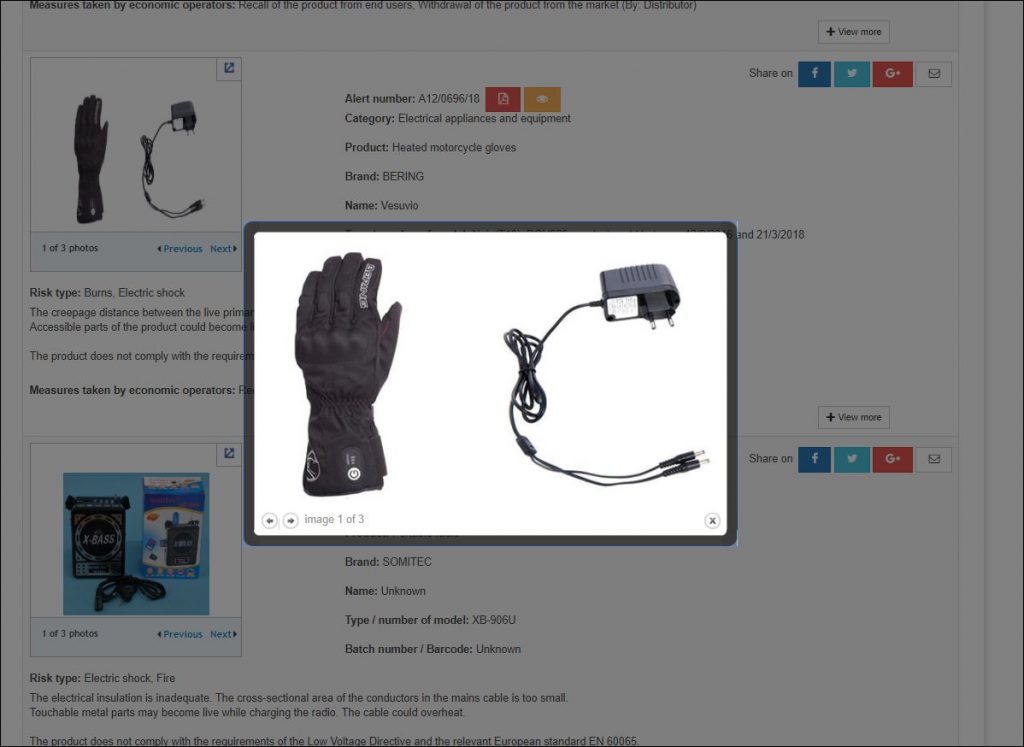“F2 Labs is not the EU police and I do not know any EU police.”
I say that very often to customers when I speak with them, particularly as it relates to the Low Voltage Directive 2014/35/Eu and its scope, vis-a-vis a product presented to us for evaluation to determine applicable EU CE marking Directives.
The reason I say that is because the scope of the Low Voltage Directive is excluded from products with an electrical input of 50 to 1,000 VAC or 75 to 1,500 VDC. Customers will often ask us for a CE marking quote for a product that charges from an AC/DC adapter or operate from an AC/DC adapter, directly.
In many cases (not all, but a lot) the customer assumes that since the product, let’s say a small toothpick dispenser, that operates from 12 VDC is excluded because of the above. However, the customer supplies a power supply with the product.
I tell the customer that I am not the police because I must relay information, regulatory information… compliance information… that he or she may not like. That information is that the product is still in the scope of the Low Voltage Directive.
There are a couple of reasons for this:
- The product is sent with the means to connect to AC mains power. The overall product is the toothpick dispenser and the power supply. That product has an AC mains connection.
- The power supply, assuming it has a valid CE marking, was likely tested to EN 62368-1 while a product like a toothpick dispenser would be under a different standard, EN 60335-1. Many times, a customer may assume that the CE marking from one product translates or attaches to another. That is not the case.
In this case our opinion would be that the overall product (toothpick dispenser and power supply) are actually one product made up of two sub-assemblies. Probably that is the conclusion that an EU customs official will come to as well.
This brings me back to the reason I wrote this article today: this week’s EU RAPEX report, linked here.
I scrolled quickly through the list, published weekly, of products stopped in EU customs and now banned from the market.
First, I came to these gloves:
I am 100% sure that these gloves are not plugged in while the rider is riding the motorcycle. Therefore, the gloves must contain some type of battery… so the heating element itself is powered by DC power and the manufacturer of the glove may have considered the glove to be below the 75 VDC Low Voltage Directive threshhold. In our opinion this is an AC powered product and in the scope of the Low Voltage Directive. The EU customs officials agreed:

Next, I scrolled to this radio:
The radio is clearly “battery powered”. There is even a picture of a battery sitting on top of the radio on the box. But, the unit is supplied with an AC mains connection point, visible in the picture. This product is also in the scope of the Low Voltage Directive 2014/35/EU and as above, the EU customs officials are in agreement with that. See below:

Regarding the radio above, we note that the product would be subject to the Low Voltage Directive requirements even if rechargeable batteries were not a part of the system. That is because the Radio Equipment Directive 2014/53/EU makes the technical requirements of the Low Voltage Directive applicable if there is any wireless function, regardless of voltage.
That means that if your product has a radio in it and is powered by a tiny coin-cell battery then, legally, it must also comply with the safety requirements of the Low Voltage Directive 2014/35/EU. However, the safety compliance would be declared to the Radio Equipment Directive 2014/53/EU.
But that topic will have to wait for another article.
Want some help? F2 Labs helps manufacturers across the globe every day with small and large products. We have experts who quickly determine what is applicable to the equipment, legally and technically.
F2 Labs is here to help.
We can be contacted via this link. We can be reached by phone at 877-405-1580 and are here to help you.


